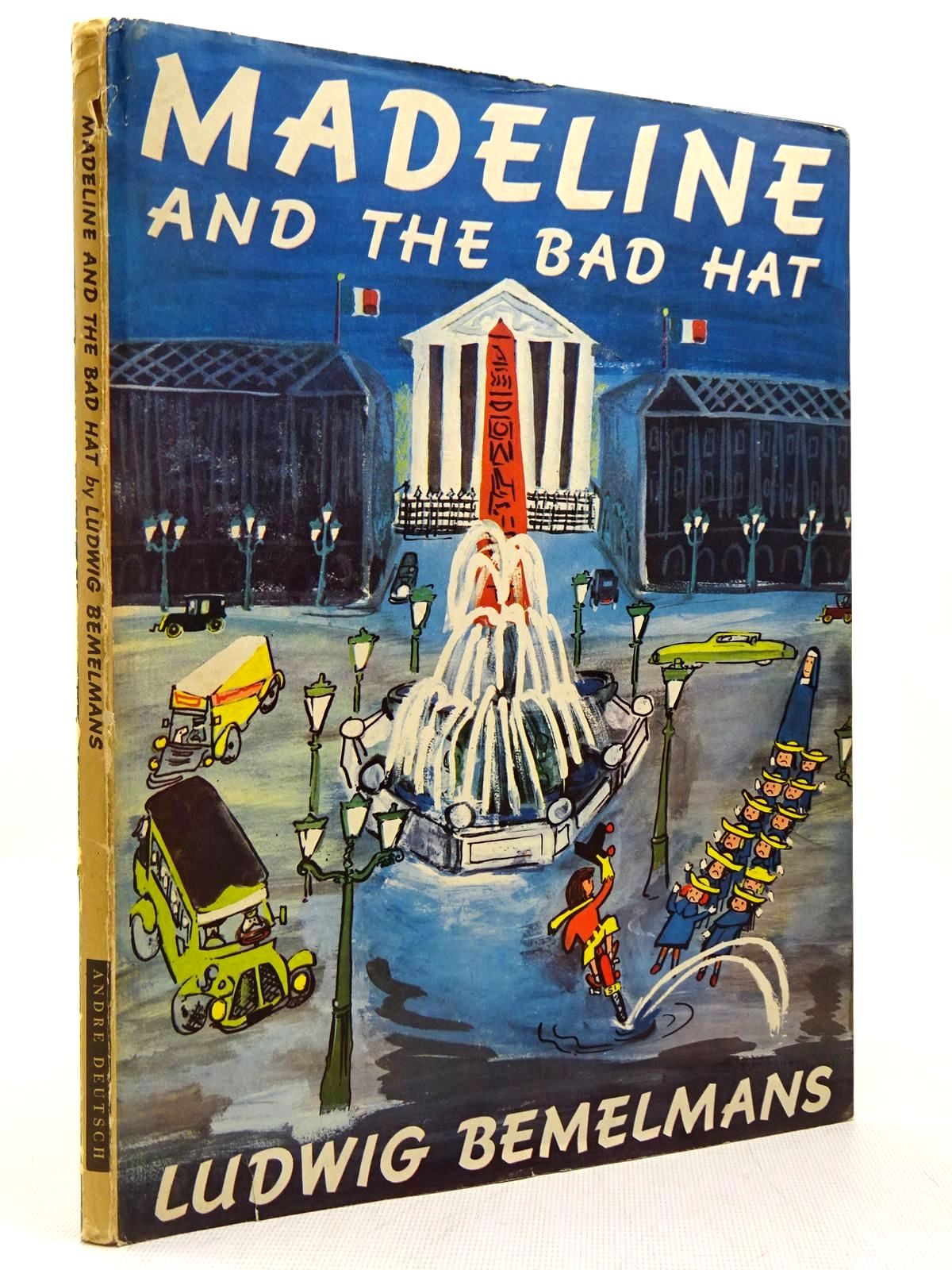Madeline by Ludwig Bemelmans
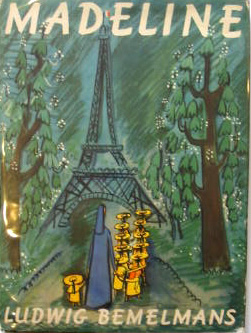 We are lucky to have a mobile library service in our little village and recently one of the books on board wasLudwig Bemelmans's book Hotel Bemelmans. I recognised the author's name from the Madeline series of books which are to the left of the shop desk in Rose's Books. So having read about some of Ludwig Bemelmans's experiences in his early life I was intrigued to read a few of his Madeline series of children's books.
We are lucky to have a mobile library service in our little village and recently one of the books on board wasLudwig Bemelmans's book Hotel Bemelmans. I recognised the author's name from the Madeline series of books which are to the left of the shop desk in Rose's Books. So having read about some of Ludwig Bemelmans's experiences in his early life I was intrigued to read a few of his Madeline series of children's books.
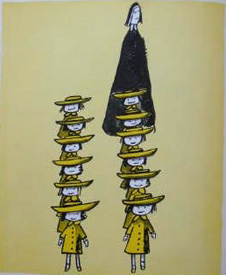 The first book in the series is, naturally enough, called Madeline. This was his wife's name but it was the childhood antics of his only daughter Barbara which inspired him to write the series. The books are written in rhyming couplets and the text is simple, sometimes with just one or two words to a page. Every page has a large illustration by Ludwig Bemelmans himself, a few are in colour and the rest in two-tone. Some of the illustrations in the Madeline books I read are of landmarks in Paris and London and, helpfully, the wrapper rear flap provides a list of those he has featured. Madeline made her first appearance in 1939 and millions of copies of her colourful picture books have been sold since.
The first book in the series is, naturally enough, called Madeline. This was his wife's name but it was the childhood antics of his only daughter Barbara which inspired him to write the series. The books are written in rhyming couplets and the text is simple, sometimes with just one or two words to a page. Every page has a large illustration by Ludwig Bemelmans himself, a few are in colour and the rest in two-tone. Some of the illustrations in the Madeline books I read are of landmarks in Paris and London and, helpfully, the wrapper rear flap provides a list of those he has featured. Madeline made her first appearance in 1939 and millions of copies of her colourful picture books have been sold since.
Madeline attended a boarding school in Paris along with her eleven classmates and was looked after by a nun called Miss Clavel. The twelve little girls walked, ate and slept in two straight lines. Although Madeline was the smallest of the group she was fearless and to quote the book 'nobody knew so well, how to frighten Miss Clavel'. One night Miss Clavel was awoken by Madeline crying and after summoning the doctor Madeline was taken to hospital and had her appendix out - poor little Madeline! A few days later Miss Clavel took the other eleven little girls, in two straight lines of course, to visit Madeline who was surrounded by toys, candy and a doll's house from her papa. Proudly she showed off her scar. That night Miss Clavel was again awoken by crying and she raced to the dormitory wondering what on earth could be the matter. She found all eleven girls crying, not because they were ill but because they too wanted their appendix out if it meant they could have such a good time as Madeline was having!
Madeline's Rescue is also set in Paris and begins with Madeline, in an attempt to frighten Miss Clavel, walking along the parapet of the bridge over the river. On this occasion she fell in and was rescued by a dog that 'kept its head' and dragged her out. I assume this brave dog must have been a stray because they took her home with them. She was given the name Genevieve and she enjoyed a good life, joining in with all the school activities. All was well until the annual inspection by the trustees - a very worrying day for everyone. Lord Cucuface, the head of the trustees, decided that Genevieve had to go; Miss Clavel pleaded for leniency but he was unmoved. After the trustees had left Miss Clavel took the girls out into the streets of Paris to look for their beloved pet but sadly there was no sign of her. They returned, in two straight lines of course, broken hearted. That night Miss Clavel was awoken by howling under the lamppost outside and they were all so relieved to see Genevieve again. It took Miss Clavel quite some time to quieten the children down as each child wanted Genevieve to sleep by them. In the final two pages the problem was solved as Genevieve produced a litter of 12 puppies, one for each girl! I certainly wasn't expecting that and I don't suppose Miss Clavel was either!
Despite the title, Madeline and the Bad Hat is not about a Hat. It is again set in Paris and introduces a new character - Pepito, the son of the Spanish Ambassador who had moved in next-door; he is the 'bad hat' from the title. Miss Clavel thought he was wonderful but Madeline had seen his antics and knew he wasn't the sweet little boy Miss Clavel thought he was. Pepito wanted to befriend the girls but was very mischievous and had no respect for animals so they were not interested. Miss Clavel bought him a tool set as an outlet for his energy - he built a guillotine and used it on their chickens! One day when the girls were out walking, in two straight lines of course, they spotted Pepito with a sack on his back. He was being followed by numerous dogs - Miss Clavel thought he was kindly feeding the dogs but alas no, in the bag he had a cat! He let the cat out in front of the dogs hoping for his idea of entertainment but he was the one who suffered as the cat, in an effort to reach safety, climbed him! A spell in bed nursing his injuries was enough to change Pepito from a Barbarian to a vegetarian, hooray! Madeline told Pepito he was no longer a 'bad hat' and they all became friends.
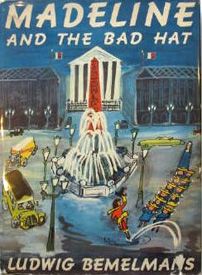
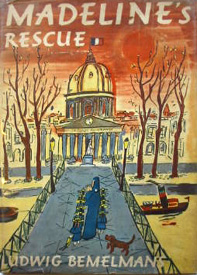
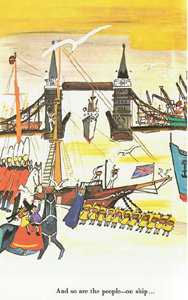
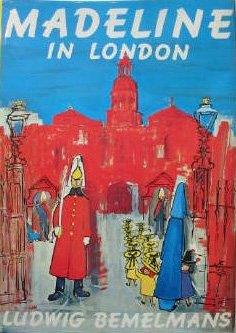
As you might expect we have a change of scenery in Madeline in London as the girls travelled to visit Pepito who, because of his father's work, had moved to London. Pepito missed the girls so his father invited Miss Clavel and the girls for a holiday. On arrival they realised that they should have brought a present; Madeline said Pepito had always wanted a horse so they managed to obtain one from a home for retired horses, as you do! As Pepito and Madeline sat on the horse a parade passed and a trumpet sounded, the horse jumped over the wall to take his place at the head of the parade - it seems this was his job before he retired and old habits die hard. The remaining girls and Miss Clavel set off, in two straight lines of course, through the streets of London to find the pair. Eventually they found Pepito, Madeline and the horse on sentry duty outside Whitehall. After a wonderful meal everyone went to bed happy - apart from the horse which hadn't been fed. He was so hungry he ate all he could find in the garden of the ambassador's house which, understandably, the gardener was not too pleased about. After this disaster Pepito's mother said the horse could not stay so he flew back to Paris with the girls and lived a happy life.
I did enjoy the Madeline books -although there isn't as much text as in some books, there is still a lot of content in each story. The rhyming couplets, I feel, enhance the reading experience and I also liked the fact that each book I read started with the same first lines:
"In an old house in Paris , that was covered with vines,
lived twelve little girls, in two straight lines."
I couldn't help but like Madeline and look forward to reading the others in the series - Madeline and the Gypsies, Madeline's Christmas andMadeline in America and other Holiday Tales.
Contributed by Lorna
(Published on 10th Dec 2014 )


